Wolfgang Amadeus Mozart's final year
Richard Wigmore
Wednesday, September 30, 2015
The story of the last 12 months of Mozart’s life and his shockingly early death at 35 became something of an obsession during the 19th century – a situation that has barely abated since. Richard Wigmore unfolds the chronology and music of that extraordinary and fateful year
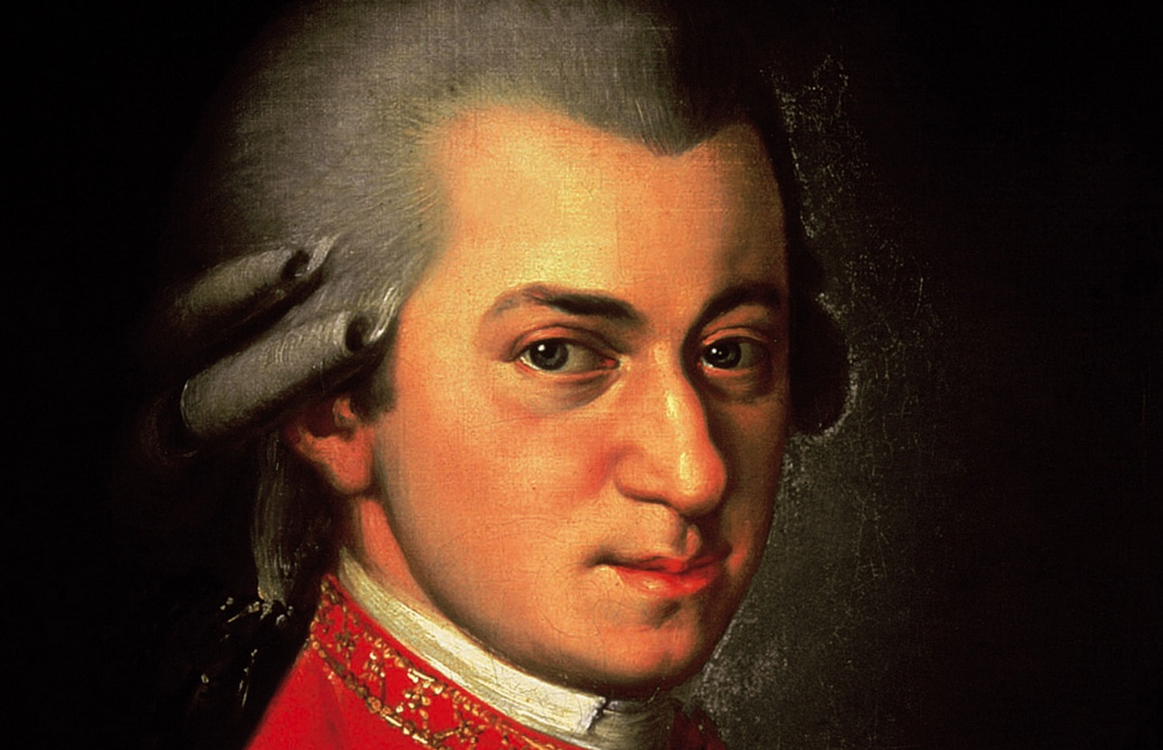
Mozart’s final year has always been a gift to the romantic imagination. It helps, of course, if a 35‑year‑old dies, apparently in abject poverty, while writing a Requiem Mass commissioned by a mysterious stranger, clad in grey or black, according to taste. Mozart’s burial in an unmarked communal grave scandalised later generations. In the mythology, a violent snowstorm was grafted on to his funeral, the elements rising in cataclysmic uproar at his demise. Then there were the rumours of poisoning that circulated after Mozart’s death – though it was not until 1823 that Salieri had the delirious fantasies that would trigger the plays by Pushkin and Peter Shaffer. By then the century had created Mozart the demonic, epitomised by the hero-rebel Don Giovanni, Mozart the subversive, and Mozart the solitary Romantic visionary, composing his last three symphonies, Nos 39 to 41, in his ivory tower.
But Mozart, like Haydn and Beethoven, never wrote for posterity. The three symphonies were intended for subscription concerts in 1788 which may or may not have taken place – though there would have been other opportunities to perform them, either in Vienna or on Mozart’s travels in 1789 and 1790. The first work he completed in 1791 was the B flat Piano Concerto, K595, which had been begun around the time of the symphonies. It would have been quite untypical if Mozart had returned to the concerto on a whim. A performance beckoned, and duly took place: at a benefit concert given by the clarinettist Joseph Bähr on March 4. A week later the Wiener Zeitung reported: ‘Herr Kapellmeister Mozart played a concerto on the forte piano, and everyone admired his art, in composition as well as performance…’ It was the last time Mozart appeared as a concerto soloist.
From K595 onwards, many of the works of 1791 have inevitably acquired a valedictory aura. Yet until he fell ill on November 20, there was no hint that the year would be his last – the parallels with Schubert in 1828 are unmissable. One of K595’s finest interpreters, Alfred Brendel, stresses that Mozart did not create K595, or even the later Clarinet Concerto, in the shadow of death. ‘Yet without a melancholy hue, both these late concertos lose their poetic lustre and become all too harmless. Irrespective of when they may have been composed, I cherish in them this valedictory quality, as I do that of Schubert’s B flat Sonata.’
The pianist Mitsuko Uchida links K595 with the wistful lyricism of the G major Concerto, K453. ‘It’s certainly very different from Mozart’s earlier B flat concertos, K450 and K456. K595 is somehow fainter. I do have a sense of spiritual farewell playing it, though the B flat Piano Sonata, K570, of 1789 has the same flavour, as a warning that we shouldn’t hear it as a premonition. The complex, post-Jupiter counterpoint in the first movement’s development is miraculous. So many players want to think “happy” in the finale, and forget the poor first oboist, who has huge problems of tonguing when it’s taken fast!’ Yet for John Eliot Gardiner, this finale, far from being an etherealised pendant to earlier 6/8 finales, is ‘full of wit and high jinks’.
In The Classical Style (Faber: 1971), the late Charles Rosen wrote of the seamless melodic continuity and delicate, chamber-musical interplay in both K595 and the Clarinet Concerto: ‘…the tone is always one of intimacy. The slow movements aspire and attain to a condition of absolute simplicity.’ K595’s Larghetto has a Romanze-style melody that mingles fastidious grace with a popular flavour characteristic of Mozart’s late music. The same tone appears in his next major work, the E flat String Quintet, K614, commissioned, according to Constanze Mozart, by Johann Tost, a former violinist in Haydn’s Esterházy orchestra who had reinvented himself as a not always scrupulous entrepreneur.
One of the fascinating things about the E flat Quintet is its balance between a breezily bucolic manner (the first movement immediately evokes the chase, with the violas imitating hunting horns) and a natural Mozartian refinement. Duncan Druce, composer, violinist and Gramophone contributor, stresses the Haydnesque flavour of both the E flat Quintet and its D major predecessor, K593, of 1790, above all in their finales, with their apparently effortless marriage of popular and ‘learned’ contrapuntal styles. ‘One reason why K614 isn’t performed as often as the earlier quintets is its technical difficulty, especially the first movement, where the rapid figuration often lies awkwardly. Strings find E flat a much less grateful key than C major, G minor and D major.’
Impoverished genius?
Mozart’s finances in his last years have provoked reams of speculation. After the golden years of 1784-86, when he promoted himself as Vienna’s most successful composer-virtuoso, his fortunes certainly dipped. But it wasn’t a simple question of waning popularity. After Joseph II’s intemperate declaration of war against the Turks early in 1788, many of the aristocrats who had been Mozart’s chief means of support disappeared to their regiments or their country estates. High taxation meant that those who remained had less to spend on music. Yet while Viennese concert life between 1788 and 1790 was seriously depleted, Mozart still earned what for most would have been a decent living, supplementing his court salary with teaching, publishing chamber music and (in the autumn of 1789) the lucrative commission for Così fan tutte.
Disinclined to economise, whether on his apartment, his wardrobe, servants, his son Carl’s schooling or costly spa cures for Constanze, Mozart sometimes lived above his means. A gambling addiction – shared by many of the Viennese aristocracy – may have exacerbated his cash-flow difficulties. Così apart, 1789 and 1790 were relatively lean years. In contrast, 1791 was probably the most profitable year of his entire life. Future prospects, including an invitation to join Haydn in London for the 1791/92 season, looked even better.
With no inkling that time was running out, Mozart continued to compose prodigiously during the winter and spring of 1791: reams of minuets and contredanses for the Carnival season, full of beguiling invention and colourful, sometimes zany scoring; a delightful, tongue-in-cheek aria, ‘Per questa bella mano’, for the unlikely combination of bass voice and double bass obbligato; and works for glass harmonica and mechanical organ, including the majestic, neo-Baroque Fantasia in F minor, K608 – Bach refracted through a Mozartian prism.
The Magic Flute
Some time in the spring of 1791 Mozart teamed up with an old family friend from Salzburg days, the actor-manager Emanuel Schikaneder, for a ‘comedy with machines’, Die Zauberflöte, to be performed in the suburban Theater auf der Wieden. He evidently relished collaborating with the convivial Schikaneder on this improbable farrago of Viennese slapstick, oriental fairy-tale and Masonic allegory. No opera embraces a more diverse range of idioms, from the songs for the chattering Papageno, via the manic opera seria parodies in the Queen of the Night’s arias and the unearthly music for the Three Boys, to the Protestant chorale of the Two Armed Men. And in the music for Sarastro and his Priests, Mozart created what Charles Rosen called ‘the first genuinely classical religious style that could be placed with honour beside his imitations of the Baroque religious forms and textures’. Half a century ago, Neville Cardus wrote that ‘the opera…is the only one in existence that might conceivably have been composed by God’.
Not all Mozartians agree. For Alfred Brendel, ‘the simplicity of Die Zauberflöte is not always a gain. Some of the Sarastro music borders on the impersonal – it could have almost been done by another composer. It is, of course, wonderful to have Die Zauberflöte and La clemenza di Tito as they are, yet, to my mind, they do not reach the astonishing freshness and perfection of Die Entführung or the da Ponte operas.’
John Eliot Gardiner finds the opera ‘too heterogeneous to be 100 per cent satisfying. You’d never guess from the fugal overture that it was a Singspiel. Mozart seems to be cramming everything into Die Zauberflöte. It has marvellous things, but it’s not as perfect, musically or structurally, as Figaro.’ Roger Norrington, who decades ago set out to rescue Die Zauberflöte from reverential tradition, contrasts its ‘transcendent simplicity’ with the sophistication of the da Ponte operas. ‘The Flute was meant to be understood and enjoyed by everyone, like Haydn’s The Creation. You can imagine the reactions of the simplest folk in Mozart’s audiences: “That Queen – wow!”’
Coronation commission
The composition of Die Zauberflöte was interspersed by smaller, occasional pieces, including the exquisite motet Ave verum corpus, composed in Baden, where the pregnant Constanze was taking the cure. A month later, in July, Mozart received a commission from an anonymous patron to compose a Requiem under conditions of strict secrecy. Unusually, he received a generous advance payment.
Mozart had virtually completed Die Zauberflöte when he plunged into another, very different opera: a setting of an old Metastasio libretto, La clemenza di Tito, for the Prague coronation of Emperor Leopold II as King of Bohemia. Salieri had been the court’s first choice to compose the opera. When the commission came his way Mozart, still in debt, was in no position to refuse. He worked frantically on Titoduring August, arriving with Constanze in Prague on the 28th, nine days before the premiere.
Far from basking in the flattering portrayal of Titus as a paragon of Enlightenment values, the royal party evidently wished they were elsewhere. ‘The grand opera is not so grand,’ wrote the Empress, ‘and the music very bad, so that almost all of us fell asleep.’ The Emperor himself was kept awake only by the performance of the alluring prima donna as the manipulative femme fatale Vitellia.
Riding the royal party’s distaste, Tito gradually gained favour. A report notes that the last performance, after Mozart had left Prague, was given ‘to a house full to overflowing, and to the unqualified approbation of the public’. Within a few years it had become one of Mozart’s most popular works, admired for its serene beauty and restraint. It then fell into virtual oblivion until its gradual rehabilitation in recent decades.
‘Tito does show signs of haste,’ says Norrington. ‘Much of it seems retrospective in style, without the sense of breaking new ground we get in Mozart’s other late operas – though there are divine things in it.’ ‘Parts of the opera are old-fashioned,’ agrees Gardiner. ‘But there are also immensely powerful, proto-Romantic elements in the opera. I’m thinking especially of the burning of the Capitol in the Act 1 finale, which structures the chorus seamlessly into the dramaturgy. This shows a mastery of the opera seria genre that even Idomeneo doesn’t match. It’s in the great French tradition – I have a hunch that Mozart studied the operas of Rameau, whom he might even have met as a boy in Paris in 1764.’
The Apotheosis of the Clarinet
Two of the most memorable arias in Tito – Sesto’s ‘Parto, parto’ and the penitent Vitellia’s ‘Non più di fiori’ – feature elaborate solos for Mozart’s friend Anton Stadler, whose prowess on the clarinet, basset clarinet (a clarinet with added low notes) and basset-horn inspired a clutch of masterpieces. In 1789 Mozart had sketched the first movement of a concerto for basset-horn. While Die Zauberflöte was in rehearsal in late September he reworked the draft for basset clarinet, and then added an Adagio and rondo. The upshot was his last and probably best-loved concerto. ‘One must work hard; and I like hard work,’ he wrote to Constanze, again taking the waters in Baden, on October 8, informing her that the previous day ‘I smoked a splendid pipe of tobacco; and then I orchestrated almost the whole of Stadler’s rondo.’
The ‘melancholy hue’ ascribed by Alfred Brendel to both the Clarinet Concerto and the late B flat Piano Concerto is undeniable. Even without the hindsight that the Clarinet Concerto was Mozart’s last orchestral work, it is hard to avoid the epithet ‘autumnal’ when describing its intimate lyricism. Yet Norrington is surely right to caution that ‘the concerto sounds autumnal because of the timbre of the clarinet’. For Gardiner ‘it certainly has wistfulness and pathos; but I don’t hear it as any more valedictory than earlier works like the A major Piano Concerto, K488.’
Clarinettist and scholar Colin Lawson hears the concerto, along with music like the March of the Priests in Die Zauberflöte, as a distillation of late-Mozartian serene simplicity. ‘There is certainly a change of style from the richness of 1785 and 1786. Mozart was aware of his audiences and cultivating a more popular manner. Yes, the concerto has something physically autumnal about it. But there’s a lot of opera too, as in the central part of the Adagio, where the clarinet duets with itself like a soprano and baritone. The concerto often looks so simple on the page. Yet much of its expressive effect comes from Mozart’s artful use of dissonance, not least towards the end of the slow movement.’
The unfinished Requiem
Although not an immediate sensation on its premiere on September 30, Die Zauberflöte quickly became the hit of the season, with virtually every number encored – as Mozart delightedly wrote to Constanze in Baden. Even after he had handed over the direction to another conductor, he continued to attend the theatre, on one occasion fazing the experienced pro Schikaneder with his antics on the glockenspiel.
By then Mozart had begun work on the secretly commissioned Requiem. As he had probably discovered at an early stage, the ‘mysterious stranger’ was an employee of one Franz von Walsegg-Stuppach, a count with ideas above his artistic station. One of his specialities was commissioning works from reputable composers and passing them off as his own. His guests were all too happy to go along with the charade. Walsegg-Stuppach intended the Requiem as a memorial to his young wife, who had died a few months earlier. Years later Constanze declared – how accurately we shall never know – that Mozart became convinced he had been poisoned, and was writing the Requiem for himself. When Mozart died on December 5, he had completed only the ‘Introit’ and ‘Kyrie’; for the movements from the ‘Dies irae’ to the ‘Hostias’ he had composed the voice parts and a figured bass, except in the ‘Lacrimosa’, which breaks off after eight bars – perhaps the last music he set down before acute rheumatic fever and/or kidney failure took its toll.
For over a century the most famous, and most mythologised, torso in Western music was performed in the completion by Mozart’s pupil Franz Xaver Süssmayr, ‘that idiot’ (Mozart’s words) who had composed, perfunctorily, the recitatives in La clemenza di Tito. Nowadays Süssmayr has his competitors, including a version by Duncan Druce recorded by Roger Norrington. ‘Playing in performances of the Süssmayr, I quickly became dissatisfied,’ says Druce. ‘Süssmayr’s “Osanna” fugue, for instance, is perfunctory in a way Mozart never was. I freely reworked the “Benedictus” using the opening theme – Süssmayr had access to scraps of paper with Mozart’s jottings, and I like to think this theme was one of them. As a player, too, I found that the subsidiary parts lack the felicity you always get with Mozart, so I reworked some of the string textures, as in the “Domine Jesu”, where I took my cue from one of the psalms in Mozart’s Solemn Vespers [K339].’
Other radical rethinkings of Süssmayr have their claims, including those by Richard Maunder and Robert Levin. But while Roger Norrington, for one, prefers the woodwind-writing in Duncan Druce’s completion, he finds himself returning to Süssmayr. ‘Without him the Requiem might have been burnt. And Mozart might well have given him the instruction to repeat the “Kyrie” fugue as the “Dona nobis pacem”.’ Gardiner agrees. ‘I admire Robert Levin’s version but go back to Süssmayr. For all his gaucheness, he had the unrepeatable advantage of being on the spot.’
The ‘what if’ question is as tantalising, and ultimately as unanswerable, with Mozart as it would be with Schubert 37 years later. Alfred Brendel has speculated on a possible ‘radicalisation’ of Mozart’s style in later years. Perhaps the serene, rarefied lyricism so characteristic of Mozart’s last years would have coexisted with an even more intense preoccupation with counterpoint, as in late Beethoven. Perhaps he would have further developed the apocalyptic vein mined in Don Giovanni and the Requiem – say, in an opera on Goethe’s Faust. Or not. Roger Norrington: ‘What would Mozart have done had he heard theEroica? That’s the question that intrigues me. Perhaps his reaction would have been one of incomprehension or disdain. Perhaps Mozart might have been unaffected by Beethoven, as Schubert was. For me, he’ll always be a breeches, not a trousers man!’
Five Recordings to Explore
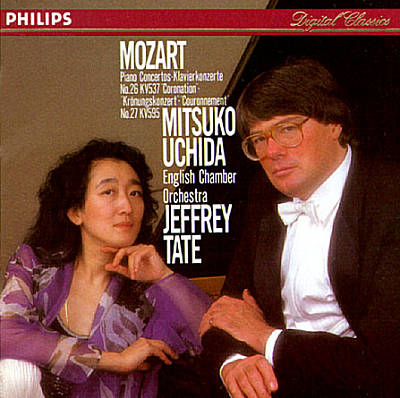
Piano Concerto, K595
Uchida; ECO / Jeffrey Tate
(Philips)
Uchida’s limpid eloquence emphasises the work’s withdrawn, introspective nature. Tate and the ECO are hypersensitive partners. Read the review
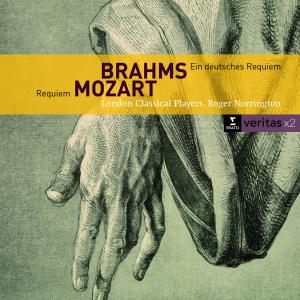
Requiem, K626 (ed Druce)
LCP / Norrington
(Virgin/Erato)
A highly dramatic performance of Duncan Druce’s radical completion of Mozart’s Requiem torso. Read the review
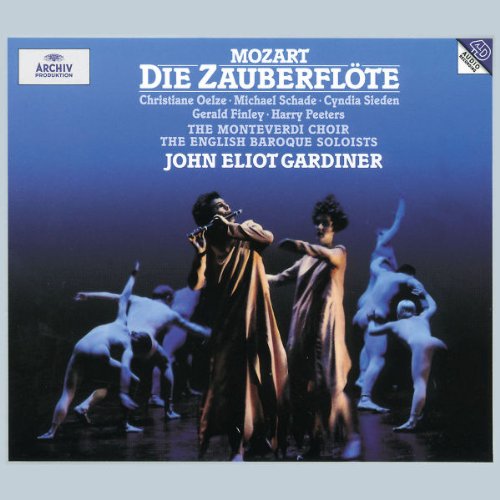
Die Zauberflöte
EBS / Gardiner
(Archiv)
A performance of infectious vitality, with the serious and comic elements held in ideal balance. Read the review
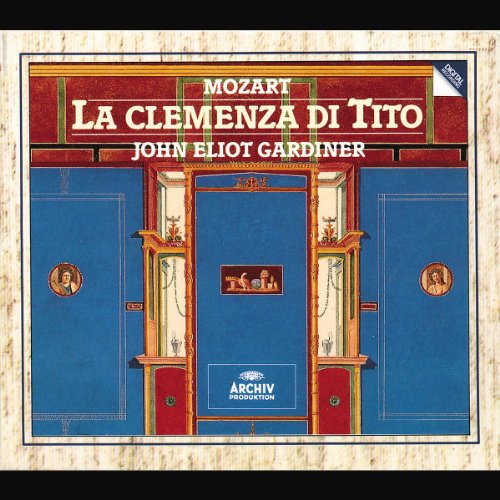
La clemenza di Tito
EBS / Gardiner
(Archiv))
Arguably the finest Tito on disc, above all for Gardiner’s subtly inflected direction and Anthony Rolfe Johnson’s uniquely moving Emperor. Read the review
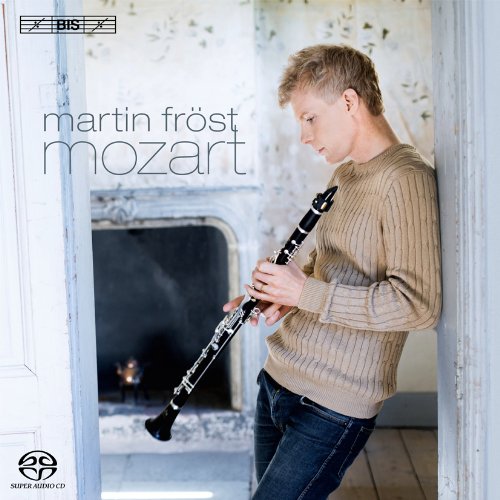
Clarinet Concerto, K622
Lawson; Hanover Band / Goodman
Nimbus M NI7023 (7/90R)
Using a basset clarinet, Lawson’s performance catches the concerto’s tenderness and roguish humour. Read the review











